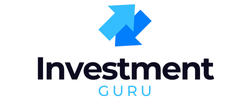A home equity line of credit (HELOC) can be a powerful tool when you need to tap into your home’s equity for renovations, debt consolidation, or unexpected expenses. But one of the biggest decisions you’ll face in 2025 is choosing between a fixed-rate HELOC and a variable-rate HELOC. Both options give you access to flexible borrowing, but the way interest is charged can dramatically change your costs over time.
A variable-rate HELOC is the traditional choice. Your interest rate is tied to the prime rate, which means it can go up or down as the market shifts. This often starts with a lower initial rate, but it also comes with uncertainty—your payments may rise if interest rates climb in the future.
A fixed-rate HELOC, on the other hand, lets you lock in a stable interest rate on some or all of what you borrow. This offers predictability, which can be especially helpful if you’re budgeting for big projects or want to avoid surprises. However, fixed-rate options may come with slightly higher initial rates or more restrictions on how you can use them.
The right choice depends on your financial goals, your risk tolerance, and your outlook on interest rates in 2025. If you value stability and expect rates to rise, a fixed-rate HELOC could be the safer bet. If you’re comfortable with some uncertainty and want lower upfront costs, a variable-rate HELOC may give you more flexibility.
In this article, we’ll break down the differences between fixed-rate and variable HELOCs, highlight the pros and cons of each, and share practical tips to help you decide which option is the best fit for your situation this year.
Table of Contents
What is a HELOC?
A Home Equity Line of Credit (HELOC) is a revolving credit line backed by your home equity. Much like a credit card, you can borrow, repay, and borrow again within a set draw period. However, HELOCs usually feature lower interest rates than credit cards and provide flexible access for home improvements, tuition, debt consolidation, or emergency funds. According to Consumer Financial Protection Bureau, HELOCs typically span a draw period of 5–10 years with repayment extending 10–20 years.
Fixed-Rate HELOC vs Variable 2025: The Core Differences
In 2025, lending institutions are offering more hybrid HELOCs, but the two primary formats remain fixed and variable. Below is a comparison that highlights how they differ:
| Feature | Fixed-Rate HELOC | Variable-Rate HELOC |
|---|---|---|
| Interest Rate | Locked in, does not change | Fluctuates based on market index (usually Prime Rate) |
| Monthly Payments | Stable and predictable | Can increase or decrease with rate shifts |
| Flexibility | Less flexible if rates drop | More potential savings if rates fall |
| Risk | Low | Moderate to high in volatile markets |
| Best For | Budget certainty and long-term projects | Short-term borrowing and risk-tolerant borrowers |
How Interest Rates Are Shaping HELOCs in 2025
After several years of rate increases that began in the early 2020s, the Federal Reserve signaled possible cuts through mid-2025. This changing environment means choosing between a fixed-rate HELOC vs variable 2025 loan takes strategy. Fixed rates protect against future hikes, while variable loans give you room to benefit if rates fall.
According to Federal Reserve data, HELOC rates average between 8%–9% in early 2025, compared with about 4% in 2019. Choosing the right structure could protect your financial stability for years ahead.

Fixed-Rate HELOC: Key Benefits & Drawbacks
Advantages
- Predictability: A locked rate ensures payment consistency.
- Easier budget planning: No surprises in monthly expenses.
- Stability in high-rate periods: Protects against market volatility.
Disadvantages
- Higher upfront interest than variable loans.
- Reduced flexibility if interest rates fall.
- Some lenders may charge fees to lock in a fixed HELOC portion.
Variable-Rate HELOC: Key Benefits & Drawbacks
Advantages
- Potential savings when rates fall: Your monthly payments may decrease.
- Lower starting APRs: At the beginning, variable loans often start cheaper than fixed-rate HELOCs.
- Greater initial flexibility: Ideal for short-term borrowing needs like home upgrades.
Disadvantages
- Unpredictable payments that can increase suddenly.
- Budget stress if interest rates surge.
- Long-term uncertainty: difficult for planning multi-year projects.

Step-by-Step: How to Compare and Apply for HELOC Options
Choosing between fixed and variable HELOCs isn’t just about theory—it’s about execution. Here’s a step-by-step breakdown to help you:
- Check Your Credit Score: HELOCs typically require a FICO above 680. Use free apps like Credit Karma or your bank’s online portal. Correct any errors before applying.
- Estimate Home Equity: Most lenders require at least 15%–20% equity. This equals (home value) – (mortgage balance). For example, a $400,000 home with a $250,000 mortgage balance leaves $150,000 in equity.
- Collect Application Documents: Recent tax returns, pay stubs, property insurance, and mortgage statements.
- Prequalify with Multiple Lenders: Online lenders often provide instant quotes. Request both fixed-rate & variable HELOC options.
- Compare APRs and Fees Side-by-Side: Lenders charge origination fees, appraisal fees, and annual maintenance costs. Always ask if the lender allows you to “fix” a portion of your variable HELOC balance later.
- Finalize Your Application: Once approved, draw funds electronically or through checks. Keep a repayment calendar to avoid interest penalties.
Costs to Consider with a HELOC in 2025
Beyond the rate decision, there are additional fees:
- Origination Fee: $0–$500 depending on lender.
- Annual Fee: $50–$100 for account maintenance.
- Early Termination Fee: Charged if you close the HELOC within 2–3 years.
- Appraisal Fees: $300–$600, depending on property location.
Always request a lender’s fee disclosure sheet before committing.
Strategies to Maximize Your HELOC in 2025
1. Use a Mixed Approach
Many lenders now permit borrowers to lock in portions of their variable HELOC into fixed rates. This hybrid approach balances predictability with lower starting rates.
2. Refinance Your HELOC Smartly
If you start with a variable HELOC but notice rates trending upward, ask your lender if you can refinance into a fixed format or convert portions without penalty.
3. Borrow Responsibly
Allocate HELOC borrowing for assets that improve long-term value—like kitchen remodels or tuition—not discretionary spending.
4. Compare Rates Every Year
Don’t assume your original lender remains the best deal. Request quotes annually, especially from credit unions and regional banks.
Frequently Asked Questions About Fixed vs Variable HELOCs (2025)
1. Is a fixed-rate HELOC worth it in 2025?
Yes, if you value predictable payments and plan multi-year projects, fixed HELOCs help protect against rate volatility.
2. Which HELOC type has lower starting rates?
Variable HELOCs typically begin with lower APRs, but rates may increase over time.
3. Can I convert a variable HELOC to fixed?
Many 2025 lenders allow partial or full conversion, sometimes with a fee. Always ask upfront.
4. Are HELOC interest payments tax deductible?
If used for home improvements, interest may qualify for deductions. See IRS Publication 936 for details.
5. What credit score do I need for a HELOC?
Most lenders require a score of 680 or above, but credit unions may approve slightly lower.
6. Do HELOCs affect my credit score?
Yes, hard inquiries lower your score slightly, and balances affect utilization. On-time payments can help improve it.
7. What is the average HELOC rate in 2025?
Rates average 8%–9% in 2025, but vary by credit profile, loan size, and lender.
8. Which HELOC is better for short-term borrowing?
A variable HELOC often works better if you plan to repay quickly.
9. Which HELOC is better in uncertain markets?
A fixed-rate HELOC shields you from unexpected hikes, ideal in volatile environments.
10. Can fees be negotiated?
Yes. Ask lenders to waive origination or annual fees, especially with strong credit or bank loyalty.
Conclusion
The debate between a fixed-rate HELOC vs variable 2025 ultimately comes down to your risk tolerance, repayment timeline, and market outlook. Fixed HELOCs provide peace of mind for long-term projects, while variable HELOCs tempt with lower initial rates that may pay off if the Federal Reserve eases borrowing costs. No matter which you choose, compare multiple lender offers, calculate total fees, and align your loan with your financial strategy. Start your comparison today to secure a HELOC that maximizes your home’s potential and protects your budget.


